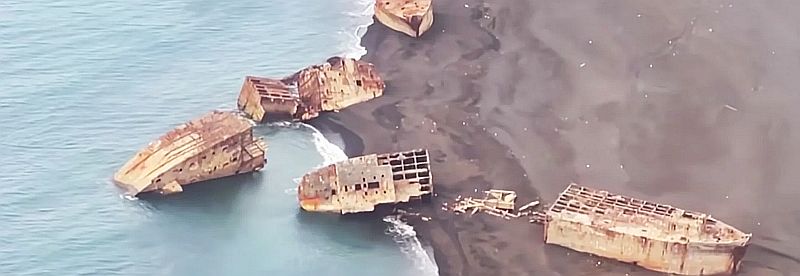 A number of small Pacific island nations, including Tuvalu, Kiribati and the Marshal Islands, are facing an existential threat from rising sea levels. According to the United States Geological Survey (USGS), sea level in the western Pacific Ocean has been increasing at a rate 2–3 times the global average, resulting in almost 0.3 meters of net rise since 1990.
A number of small Pacific island nations, including Tuvalu, Kiribati and the Marshal Islands, are facing an existential threat from rising sea levels. According to the United States Geological Survey (USGS), sea level in the western Pacific Ocean has been increasing at a rate 2–3 times the global average, resulting in almost 0.3 meters of net rise since 1990.
Not every island group is sinking, however. The Drive recently highlighted a beach on Iwo Jima, which is rising due to recent volcanic activity, revealing two dozen “ghost ships” sunk during World War II. The ships were originally scuttled to create an artificial breakwater for a planned harbor.
As the island rises by between 10 and 30 inches per year—the beach where U.S. forces landed is now over 50 feet above sea level and the scuttled ships are “moving” from offshore relics to eerie onshore monoliths.
U.S. forces sank the 24 ships during the Battle of Iwo Jima in 1945. One of the bloodiest battles in World War II, the 36-day assault saw roughly 70,000 U.S. Marines fight around 20,000 Japanese soldiers hiding out in bunkers within the island’s volcanic rocks. By the end of the battle, 20,000 marines had been wounded and nearly 7,000 killed. Nearly all of the Japanese soldiers, save for 216 captured alive, were killed in action.
Ghost ships sunken during WWII suddenly rise to surface on Japan’s iconic island

The whole collection is nicely visible in this satellite view via Google:
https://www.google.com/maps/place/Iwo+Jima/@24.7771155,141.2901978,702m/data=!3m1!1e3!4m5!3m4!1s0x60ec20bd85e79d1d:0xee0bf18f78f4f09b!8m2!3d24.7875734!4d141.3155653
About the beach where the landing was, are you saying the beach is gone and the troops would have to climb a 50-foot wall to get into action? Or is there still a beach and they would have fought an uphill battle to get past the gradual 50 foot incline if they landed today?